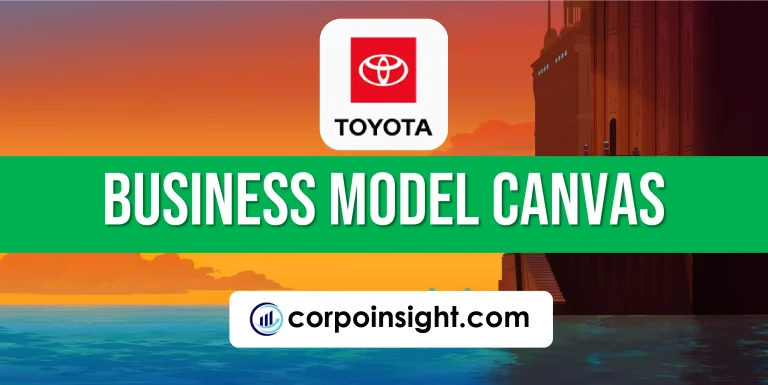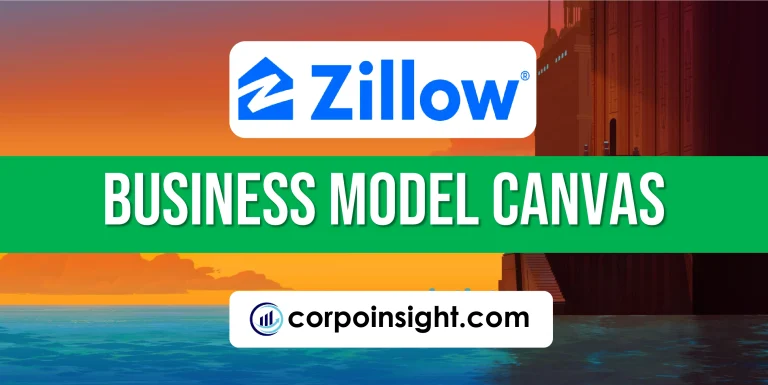HBO Business Model Canvas 2024
HBO, the premium cable network that has captivated audiences for decades with its groundbreaking original series and thought-provoking documentaries, continues to push the boundaries of television storytelling, offering viewers an unparalleled entertainment experience that challenges conventions and ignites cultural conversations. In this HBO Business Model Canvas, I will identify its customer segments, value proposition, revenue streams, channels, customer relationships, key activities, key resources, key partners, and cost structure.
Interesting fact!
HBO was the first cable network to win an Emmy Award, for “She’s Nobody’s Baby: A History of American Women in the 20th Century” in 1981.
HBO Competitors
Netflix | Amazon Prime Video | Disney+ | Hulu | Apple TV+ | Paramount+ | Peacock | Starz | Showtime | AMC+
Customer Segments – HBO Business Model Canvas
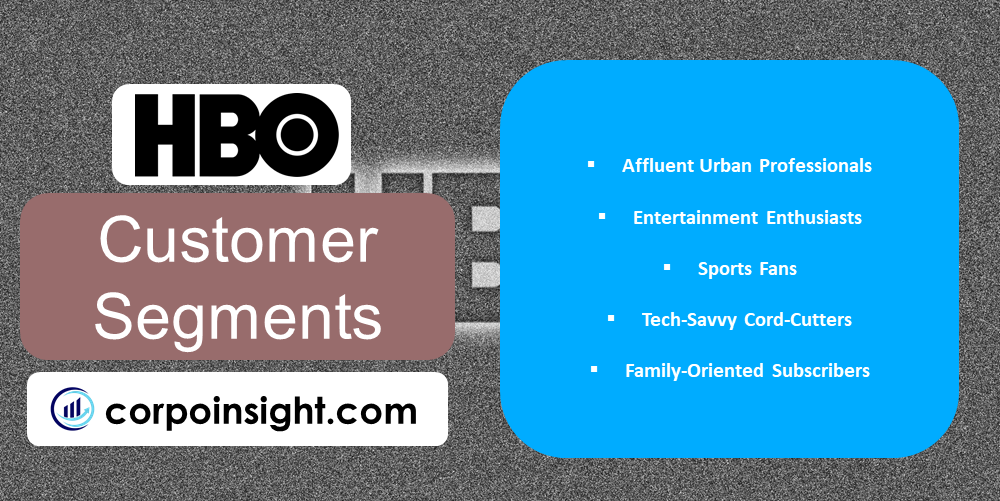
Affluent Urban Professionals: HBO’s premium content and high-quality productions attract well-educated, high-income individuals in urban areas who are willing to pay for exclusive entertainment; this demographic, often comprised of millennials and Gen X, values prestige TV and critically acclaimed series like “Succession” and “The White Lotus.”
Entertainment Enthusiasts: Avid consumers of media content, including cinephiles and TV series aficionados, form a significant portion of HBO’s customer base; these viewers, who span various age groups, are drawn to HBO’s diverse lineup of original programming, documentaries, and curated film selections.
Sports Fans: While not traditionally associated with sports, HBO has carved out a niche among boxing enthusiasts and those interested in sports documentaries; the network’s “HBO Sports” division, known for its high-quality productions, appeals to viewers seeking in-depth analysis and behind-the-scenes content in the world of athletics.
Tech-Savvy Cord-Cutters: With the rise of HBO Max (which has since been rebranded as Max), HBO has successfully tapped into the growing market of streaming-only consumers; these customers, often younger and more tech-savvy, prefer the flexibility and convenience of accessing content across multiple devices without traditional cable subscriptions.
Family-Oriented Subscribers: HBO’s expansion into more family-friendly content, particularly through its Max platform, has broadened its appeal to households with children; this segment values the combination of adult-oriented prestige content and quality programming for younger viewers, allowing HBO to serve as a comprehensive entertainment solution for diverse family units.
Value Proposition – HBO Business Model Canvas

Premium Original Content: HBO’s hallmark is its high-quality, critically acclaimed original programming, which includes groundbreaking series like “Succession,” “House of the Dragon,” and “The Last of Us”; this commitment to exceptional storytelling and production values sets HBO apart in a crowded entertainment landscape, offering viewers unparalleled narrative experiences.
Diverse Content Library: Through its streaming platform Max (formerly HBO Max), the network provides a vast and diverse content library that spans genres and demographics; this comprehensive offering, which includes HBO originals, Warner Bros. films, and content from various WarnerMedia properties, delivers exceptional value to subscribers seeking a wide range of entertainment options.
Ad-Free Viewing Experience: HBO’s traditional cable offering and its ad-free streaming tier provide an uninterrupted, premium viewing experience that appeals to consumers who prioritize immersive entertainment; this ad-free environment enhances the perceived value of HBO’s content and justifies its premium pricing structure in the eyes of many subscribers.
Cultural Relevance and Prestige: HBO has consistently produced content that drives cultural conversations and garners critical acclaim, as evidenced by its numerous Emmy and Golden Globe awards; this reputation for quality and relevance adds significant value to the brand, attracting viewers who seek to engage with cutting-edge, thought-provoking entertainment.
Flexibility and Accessibility: With options for both traditional cable subscriptions and standalone streaming through Max, HBO offers flexibility in how consumers access its content; this adaptability, combined with features like simultaneous streaming and offline viewing, caters to the evolving preferences of modern viewers who demand convenience and control over their entertainment experiences.
Revenue Streams – HBO Business Model Canvas
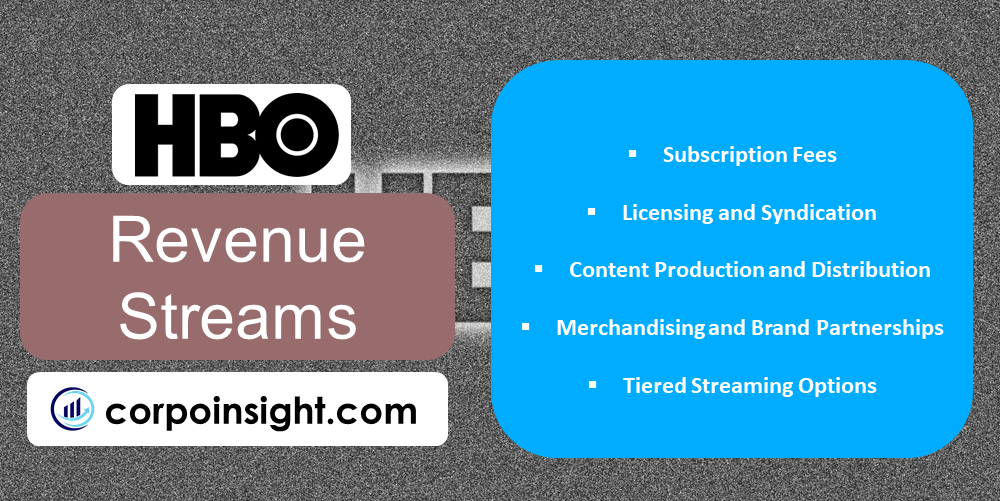
Subscription Fees: The cornerstone of HBO’s revenue model, subscription fees from both traditional cable packages and the Max streaming service, contribute significantly to the company’s income; this dual-channel approach allows HBO to capture revenue from legacy cable customers while also tapping into the growing market of cord-cutters and digital-native consumers.
Licensing and Syndication: HBO generates substantial revenue by licensing its original content to international markets and other platforms, where hit shows like “Game of Thrones” and “The Sopranos” continue to draw audiences; this strategy not only provides an additional income stream but also serves to expand HBO’s global brand presence and attract new subscribers to its services.
Content Production and Distribution: Through its parent company, Warner Bros. Discovery, HBO benefits from revenue generated by producing and distributing content for third-party networks and streaming platforms; this diversification allows HBO to leverage its production expertise beyond its own channels, creating additional income opportunities in the broader entertainment ecosystem.
Merchandising and Brand Partnerships: Capitalizing on the popularity of its original series, HBO has developed a robust merchandising business, selling products ranging from “Game of Thrones” collectibles to “Succession” board games; additionally, strategic brand partnerships and collaborations provide supplementary revenue while enhancing audience engagement and brand loyalty.
Tiered Streaming Options: HBO’s streaming service, Max, offers multiple subscription tiers, including ad-supported and ad-free options at different price points; this tiered approach allows HBO to capture a wider range of consumers, balancing premium ad-free experiences with more affordable, ad-supported alternatives to maximize revenue potential across diverse market segments.
Channels – HBO Business Model Canvas
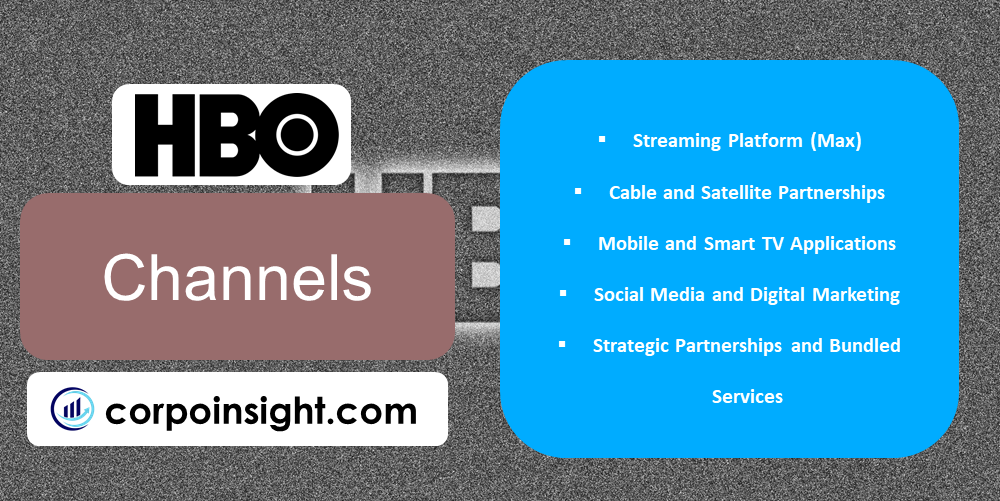
Streaming Platform (Max): HBO’s primary digital channel, Max (formerly HBO Max), serves as a direct-to-consumer platform offering a vast library of content; this comprehensive streaming service, which includes HBO originals, Warner Bros. films, and content from various WarnerMedia properties, allows HBO to reach cord-cutters and digital-native audiences directly, bypassing traditional distribution methods.
Cable and Satellite Partnerships: Despite the shift towards streaming, HBO maintains strong relationships with cable and satellite providers, offering its content as a premium add-on to existing packages; this legacy channel remains crucial for reaching older demographics and consumers in areas with limited broadband access, ensuring HBO’s content is available across diverse distribution networks.
Mobile and Smart TV Applications: HBO has developed robust applications for various mobile devices and smart TVs, ensuring its content is accessible across multiple platforms; these apps, which offer features like offline viewing and personalized recommendations, cater to the on-the-go lifestyle of modern consumers while providing a seamless viewing experience across devices.
Social Media and Digital Marketing: Leveraging social media platforms and digital marketing channels, HBO engages audiences through targeted campaigns, behind-the-scenes content, and interactive experiences; this strategy not only promotes HBO’s programming but also fosters community engagement, driving conversation and buzz around its shows and enhancing brand loyalty.
Strategic Partnerships and Bundled Services: HBO has forged partnerships with telecom companies and other service providers to offer its content as part of bundled packages; these collaborations, such as including HBO Max with certain AT&T wireless plans, expand HBO’s reach and provide added value to consumers, potentially capturing audiences who might not have subscribed to HBO as a standalone service.
Customer Relationships – HBO Business Model Canvas
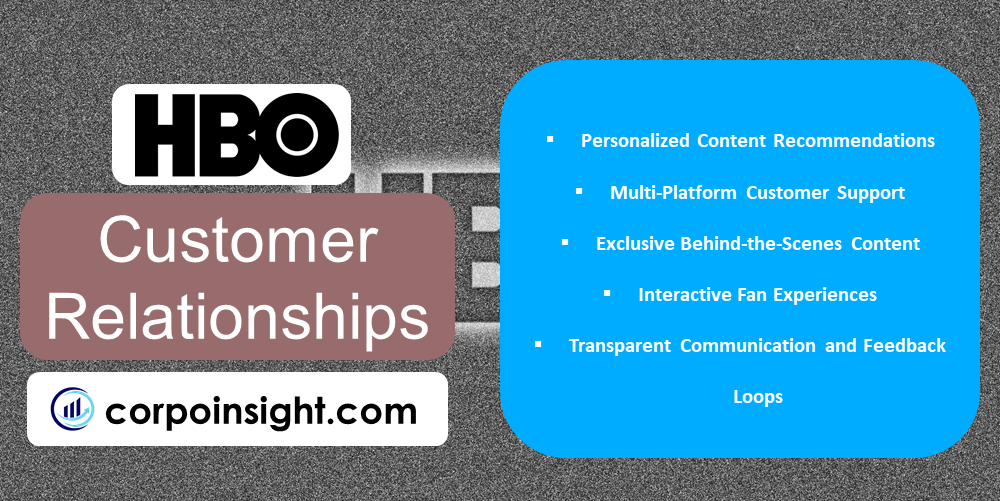
Personalized Content Recommendations: HBO leverages advanced algorithms and machine learning to provide tailored content recommendations to its subscribers through its Max platform; this personalized approach, which takes into account viewing history and preferences, enhances user engagement and satisfaction by helping viewers discover new content aligned with their interests, thereby fostering a sense of value and connection with the service.
Multi-Platform Customer Support: Recognizing the diverse needs of its user base, HBO offers comprehensive customer support across various channels, including live chat, social media, and traditional phone support; this multi-faceted approach ensures that subscribers can easily access assistance through their preferred method of communication, demonstrating HBO’s commitment to customer satisfaction and problem resolution.
Exclusive Behind-the-Scenes Content: HBO cultivates deeper relationships with its audience by offering exclusive behind-the-scenes content, cast interviews, and making-of documentaries for its popular shows; this insider access, often shared through HBO’s official channels and social media platforms, creates a sense of exclusivity and fosters a deeper connection between the brand and its most engaged fans.
Interactive Fan Experiences: To enhance viewer engagement, HBO frequently organizes interactive fan experiences, such as virtual watch parties, live Q&A sessions with cast members, and immersive online events tied to major show premieres; these initiatives not only generate excitement around HBO’s content but also create a sense of community among viewers, strengthening their emotional connection to the brand.
Transparent Communication and Feedback Loops: HBO maintains open lines of communication with its subscribers, regularly soliciting feedback on content and user experience through surveys and beta testing programs; this commitment to transparency and continuous improvement demonstrates HBO’s value for customer input, fostering a collaborative relationship that helps shape the future of the service and ensures it remains aligned with subscriber preferences.
Key Activities – HBO Business Model Canvas
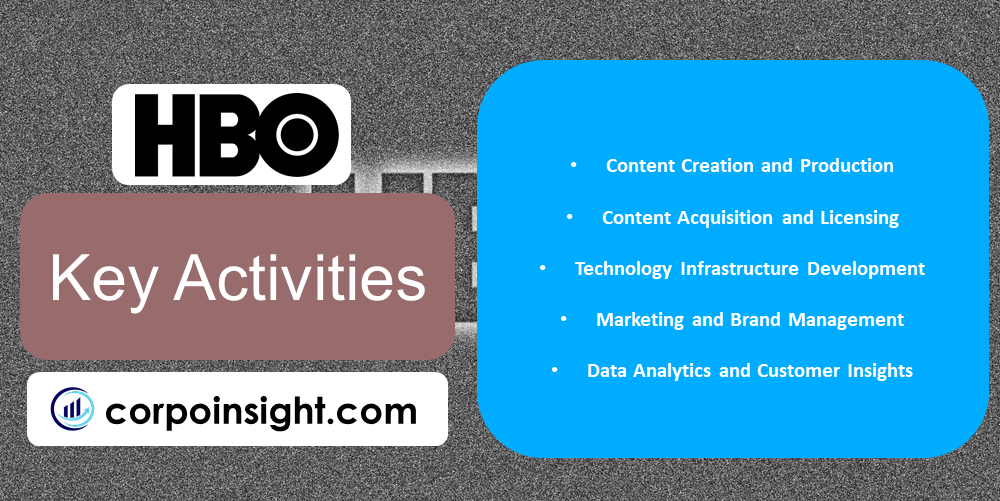
Content Creation and Production: HBO’s primary focus remains the development and production of high-quality, original content across various genres; this includes critically acclaimed series like “Succession” and “House of the Dragon,” as well as thought-provoking documentaries and innovative comedy specials, which collectively form the cornerstone of HBO’s value proposition and brand identity.
Content Acquisition and Licensing: In addition to producing original content, HBO actively acquires and licenses premium content from other studios and creators to enhance its library; this strategic activity, which includes securing exclusive streaming rights for popular films and series, ensures a diverse and comprehensive content offering that caters to a wide range of viewer preferences.
Technology Infrastructure Development: HBO continually invests in and upgrades its technological infrastructure to support its streaming platform, Max; this ongoing activity involves enhancing streaming quality, improving user interfaces, and implementing advanced features like personalized recommendations and seamless cross-device viewing experiences, all of which are crucial for maintaining competitiveness in the rapidly evolving digital entertainment landscape.
Marketing and Brand Management: HBO engages in extensive marketing activities to promote its content and maintain its premium brand image; these efforts encompass traditional advertising, digital marketing campaigns, social media engagement, and strategic partnerships, all designed to create buzz around new releases, attract subscribers, and reinforce HBO’s position as a leader in quality entertainment.
Data Analytics and Customer Insights: Leveraging advanced data analytics tools, HBO continuously analyzes viewer behavior, content performance, and market trends; this crucial activity informs decision-making across the organization, from content creation and acquisition to user experience improvements and personalized marketing strategies, enabling HBO to stay ahead of viewer preferences and industry shifts.
Key Resources – HBO Business Model Canvas

Intellectual Property Portfolio: HBO’s vast library of original content, including iconic series like “The Sopranos,” “Game of Thrones,” and “Succession,” represents a crucial intellectual asset; this extensive catalogue not only drives subscriber acquisition and retention but also provides opportunities for licensing, merchandising, and potential spin-offs, cementing HBO’s position as a premium content provider.
Technological Infrastructure: HBO’s robust technological backbone, which supports its streaming platform Max, is a critical resource that enables seamless content delivery across various devices; this infrastructure, encompassing advanced CDNs, adaptive bitrate streaming, and sophisticated recommendation algorithms, ensures a high-quality viewing experience while facilitating personalized content discovery for millions of subscribers worldwide.
Creative Talent Network: HBO’s ability to attract and retain top-tier creative talent, including renowned writers, directors, and actors, is a key resource that distinguishes it in the competitive entertainment landscape; this network of creatives, drawn by HBO’s reputation for artistic freedom and quality productions, consistently delivers groundbreaking content that garners critical acclaim and viewer loyalty.
Brand Equity and Reputation: HBO’s strong brand equity, built over decades of delivering premium content, serves as a valuable intangible asset; this reputation for quality and innovation not only attracts subscribers but also provides leverage in negotiations with content creators, distribution partners, and potential collaborators, giving HBO a significant competitive advantage in the industry.
Strategic Partnerships: HBO’s relationships with various entities within the Warner Bros. Discovery conglomerate, as well as external partners, constitute a vital resource; these partnerships, which span content production, distribution, and marketing, allow HBO to leverage a broader ecosystem of resources and expertise, enhancing its ability to create, promote, and monetize content effectively.
Key Partners – HBO Business Model Canvas
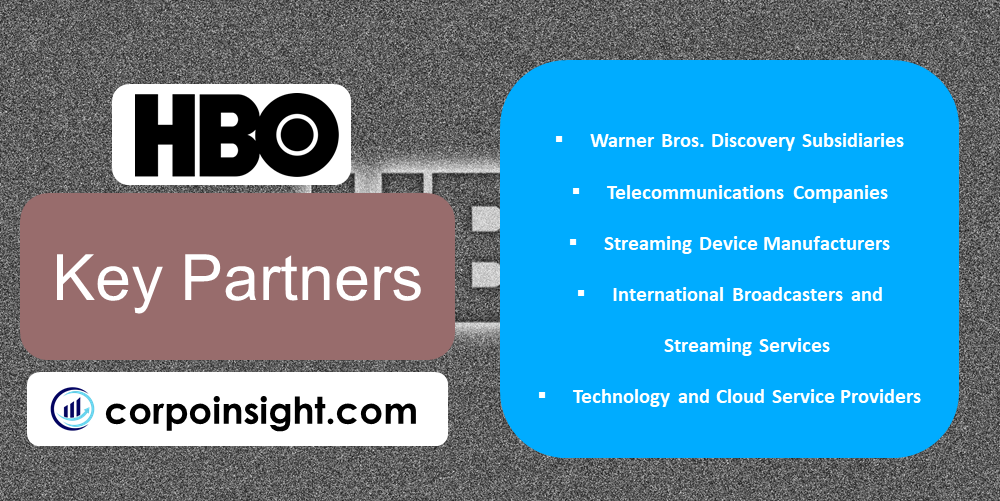
Warner Bros. Discovery Subsidiaries: HBO’s integration within the Warner Bros. Discovery conglomerate provides access to a vast network of internal partners, including Warner Bros. Studios and Discovery’s content libraries; this synergistic relationship allows HBO to leverage diverse content assets, production capabilities, and distribution channels, enhancing its ability to create and deliver compelling entertainment offerings across multiple platforms.
Telecommunications Companies: HBO maintains strategic partnerships with major telecom providers, such as AT&T and Verizon, which bundle HBO’s services with their internet and mobile plans; these collaborations not only expand HBO’s reach to a broader customer base but also provide a seamless integration of HBO content into various digital ecosystems, enhancing subscriber convenience and accessibility.
Streaming Device Manufacturers: To ensure widespread availability of its content, HBO partners with manufacturers of smart TVs, streaming devices, and gaming consoles, including companies like Roku, Amazon (Fire TV), and Apple; these partnerships facilitate the integration of HBO’s streaming app across diverse platforms, maximizing its potential audience and improving the viewing experience for subscribers.
International Broadcasters and Streaming Services: HBO extends its global footprint through partnerships with international broadcasters and regional streaming platforms, allowing for the distribution of its content in markets worldwide; these collaborations, which often involve licensing agreements or co-production deals, enable HBO to monetize its content globally while adapting to local market preferences and regulatory environments.
Technology and Cloud Service Providers: To support its streaming infrastructure and data analytics capabilities, HBO partners with leading technology companies and cloud service providers; these crucial partnerships, potentially involving firms like Amazon Web Services or Microsoft Azure, ensure that HBO can deliver high-quality streaming experiences, implement advanced features, and scale its operations efficiently to meet growing demand.
Cost Structure – HBO Business Model Canvas

Content Production and Acquisition: HBO’s most significant cost driver is the production and acquisition of premium content, with budgets for original series like “House of the Dragon” reportedly reaching up to $20 million per episode; this substantial investment, which also includes licensing fees for third-party content, reflects HBO’s commitment to delivering high-quality programming that differentiates it in a competitive market.
Technology Infrastructure and Development: Maintaining and upgrading the robust technology infrastructure that powers HBO’s streaming platform, Max, represents a considerable ongoing expense; this cost category encompasses cloud computing services, content delivery networks, and the continuous development of user interface and personalization features, all of which are crucial for delivering a seamless viewing experience to millions of subscribers.
Marketing and Customer Acquisition: HBO allocates significant resources to marketing campaigns and customer acquisition strategies, with annual marketing budgets potentially reaching hundreds of millions of dollars; these expenses, which cover traditional advertising, digital marketing, and promotional partnerships, are essential for attracting new subscribers and promoting HBO’s expansive content library in an increasingly crowded entertainment landscape.
Talent Compensation and Royalties: The cost of securing and retaining top-tier talent, including actors, directors, and producers, forms a substantial portion of HBO’s expenses; this category includes not only upfront payments but also ongoing royalties and profit-sharing agreements, reflecting the premium that HBO places on creative talent as a key differentiator in producing acclaimed content.
Distribution and Licensing Fees: While HBO benefits from distribution agreements, it also incurs costs related to these partnerships, including revenue-sharing with cable and satellite providers, as well as fees for featuring its app on various streaming platforms; additionally, as part of the Warner Bros. Discovery conglomerate, HBO may bear internal costs for accessing and distributing content from sister companies, contributing to its overall operational expenses.
Summary of HBO Business Model Canvas
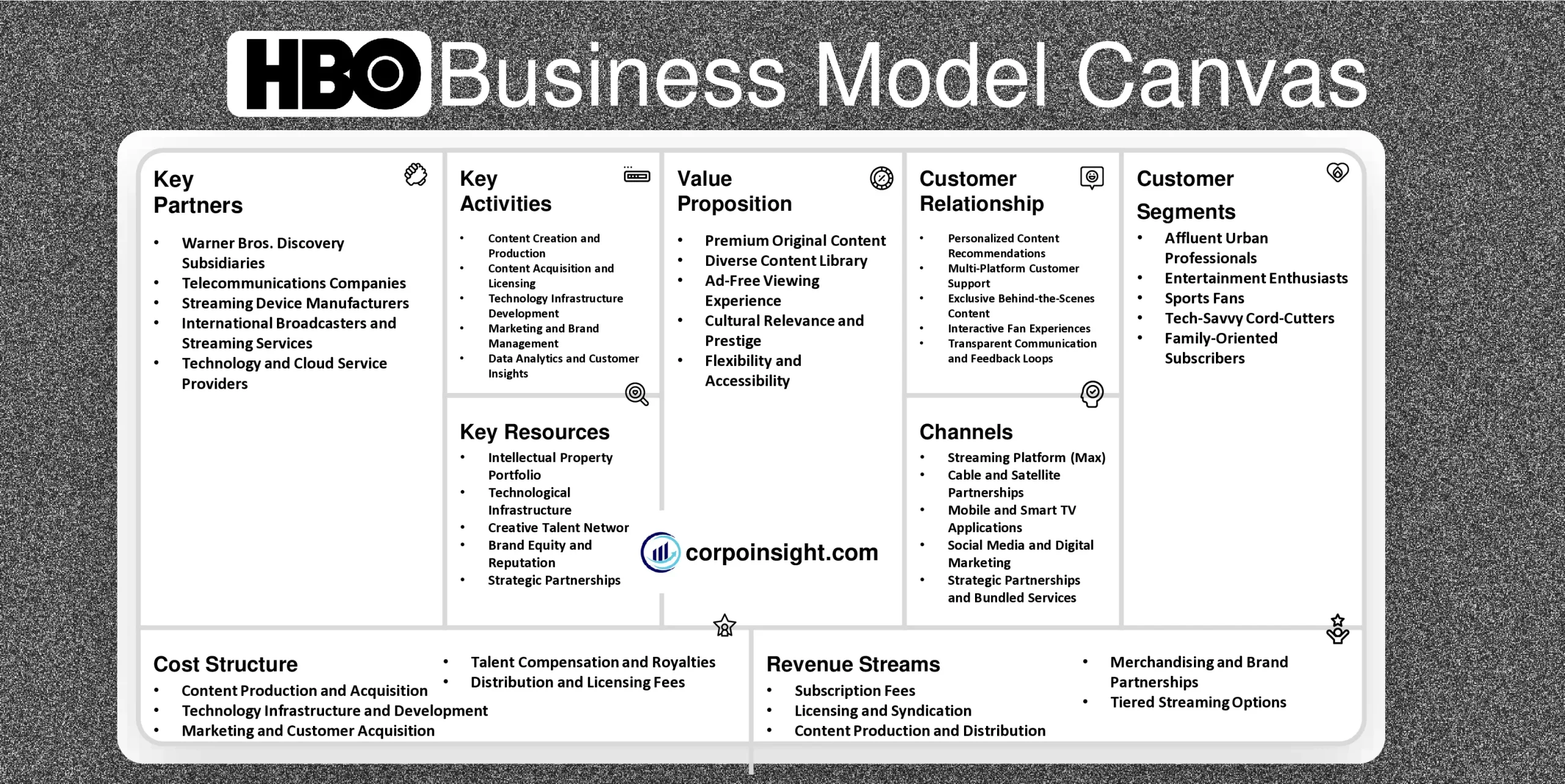
Conclusion on HBO Business Model Canvas
HBO’s business model canvas reflects a premium content provider adapting to the digital age. Its value proposition centers on high-quality original programming and a vast content library, delivered through both traditional and streaming channels. HBO leverages its strong brand, technological infrastructure, and strategic partnerships to maintain its competitive edge. While facing significant costs in content production and technology, HBO’s diverse revenue streams and customer relationships position it well in the evolving entertainment landscape.

This is Ahsanul Haque, someone very passionate about digital marketing, SEO, and Data Analytics and founder of the Analytics Empire and currently pursuing my major in marketing at Bangladesh University of Professionals.



